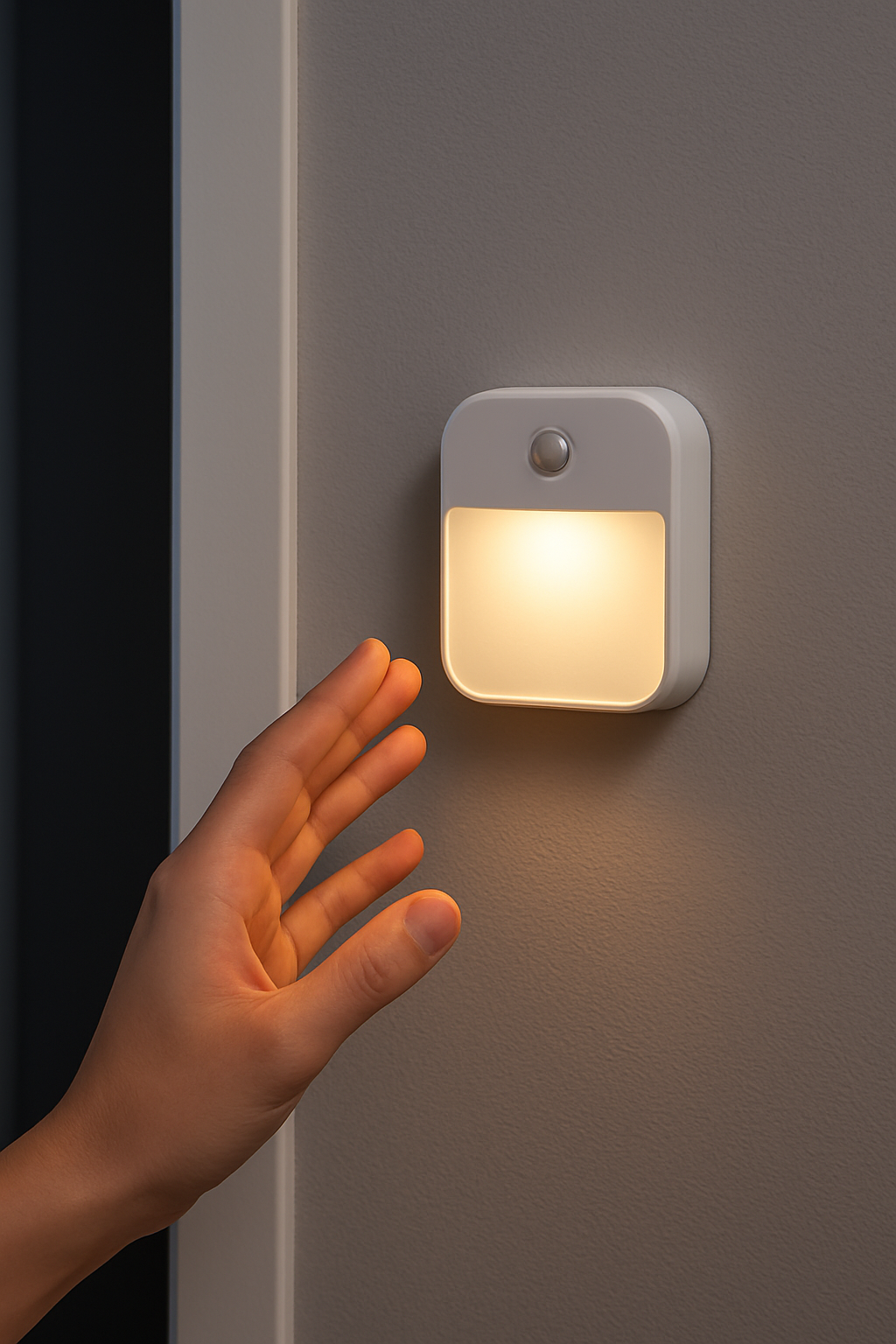
How Motion Sensor Lights Save Energy at Home
Share
When you think about energy efficiency, most people’s minds jump to the big-ticket items: smart thermostats, solar panels, or energy-efficient appliances. But sometimes, it’s the small shifts—the little changes in our daily environment—that add up to make the biggest impact. One of the simplest yet most powerful upgrades you can make to your home is adding motion sensor lights. And trust me, once you’ve experienced them, you’ll wonder how you ever lived without them.
This guide isn’t just about the cool factor of lights that flick on when you walk by. It’s about understanding why motion sensor lights save energy, how they improve convenience, and why they’re becoming a must-have in modern households.
Why Motion Sensor Lights Are More Than Just a Convenience
Walk into a dark hallway at night and—bam—the lights flick on. Step into your garage with both arms full of groceries, and the light greets you before you can even fumble for the switch. It’s practical. It feels futuristic. But here’s the part that often gets overlooked: every time that light switches itself off, it’s saving energy.
And in today’s world, where energy costs are climbing and sustainability is on everyone’s radar, that matters more than ever.
The beauty of motion sensor lights lies in their automatic efficiency. They’re not waiting for you to remember to flick a switch. They’re not wasting power in empty rooms. They’re always working quietly in the background, making sure electricity isn’t being used when it’s not needed.
The Science Behind Energy Savings
So how exactly do motion sensor lights save energy? The answer lies in reducing “phantom” energy waste. Think about it: how many times have you left a light on without realizing it? A bathroom light burning all night. A hallway light left on while you’re out for the day.
Motion sensors cut down on that by only supplying power when movement is detected. And the technology has become remarkably smart. Many motion sensors come with built-in timers, daylight detection (so they don’t switch on in daylight), and adjustable sensitivity levels. That means the light isn’t just turning on whenever—it’s turning on when it actually makes sense.
In fact, studies have shown that motion sensor lights can reduce lighting energy use by 30 to 80 percent, depending on placement and usage. That’s not just a few pennies shaved off your bill—it’s a noticeable impact over months and years.
Where Motion Sensor Lights Save Energy the Most
Not every room in your house needs a motion sensor. The trick is knowing where they’ll have the biggest impact. Let’s break it down:
Hallways and Staircases
These are prime spots. Lights here often get left on for safety, but they don’t need to be on constantly. Motion sensors make sure you have light when you’re moving through and darkness when you’re not.
Bathrooms
How many times do lights stay on in the bathroom long after someone has left? A motion sensor makes sure that stops happening.
Closets and Pantries
You step in, grab what you need, step out. No one remembers to flip the switch off afterward. Motion sensors fix that effortlessly.
Garages and Basements
These areas often have limited natural light, which means lights stay on longer than they should. Motion sensors ensure lights only run when you’re there.
Outdoor Security Lighting
This one is huge. Outdoor lights are often left on all night “just in case.” With motion sensors, the lights only activate when movement is detected, cutting hours of unnecessary energy use.
How Motion Sensor Lights Work
Motion sensor lights typically use one of three detection technologies:
Passive Infrared (PIR): Detects body heat and movement. Perfect for indoor spaces like hallways or bathrooms.
Ultrasonic: Sends out sound waves and measures their reflection. Great for detecting even subtle movement.
Dual-Technology: Combines both methods for accuracy and fewer false triggers.
Whichever type you choose, the underlying principle is the same: light only when it’s needed. That’s the core reason motion sensor lights save energy.
The Real-Life Savings
Let’s put some numbers to this. Imagine you have a hallway light with a 60-watt bulb. If it’s left on for 5 hours a day unnecessarily, that’s 300 watt-hours wasted daily—over 9 kilowatt-hours a month. Depending on your energy rates, that’s a few dollars down the drain for just one bulb.
Now, expand that across your whole home. Add in outdoor lights that run for hours at night, bathroom lights that burn longer than they should, and forgotten garage lights. Suddenly, you’re looking at dozens of wasted kilowatt-hours every month.
Motion sensors aren’t just about shaving pennies. They’re about cutting consistent, repeated waste that stacks up over time.
Motion Sensor Lights and Sustainability
There’s another angle here that goes beyond your wallet: sustainability. Energy production often relies on burning fossil fuels, which contributes to carbon emissions. By using less electricity, you’re directly lowering your carbon footprint.
This is where motion sensor lights shine—literally and figuratively. They take something as ordinary as lighting and make it smarter, cleaner, and more aligned with a greener lifestyle.
For people who care about living sustainably (and that number is growing fast), motion sensor lights are one of the easiest “entry-level” eco-friendly upgrades you can make at home.
Combining Motion Sensor Lights with LEDs
If you really want to maximize efficiency, pair your motion sensor setup with LED bulbs. LEDs already use up to 75% less energy than incandescent bulbs. Add the auto-off power of motion sensors, and the savings multiply.
This combo doesn’t just lower your bills—it extends bulb life. Because LEDs are only on when needed, they’re not burning hours unnecessarily, which means fewer replacements and less waste.
The Everyday Benefits You Don’t Think About
Here’s the thing: energy savings are great, but the everyday lifestyle perks are what people really fall in love with.
No more stumbling into a dark bathroom at 2 a.m.
No more nagging kids (or partners) to “turn off the lights.”
No more wasted outdoor lighting blasting the yard all night.
Motion sensors don’t just save energy—they save mental bandwidth. And in today’s always-busy world, that’s priceless.
Addressing Common Concerns
Of course, whenever motion sensor lights come up, people have questions. Let’s tackle a few.
Do they turn off too quickly?
Most models let you set a timer. You can choose anywhere from 15 seconds to 30 minutes.
What about pets?
Many sensors are designed to ignore small movements like pets. Sensitivity can usually be adjusted to avoid false triggers.
Are they expensive?
Not really. Basic models start under $20, and even higher-end ones with dual technology or smart features are affordable compared to long-term energy savings.
Smart Homes and the Future of Motion Sensor Lighting
Today’s motion sensor lights aren’t just standalone devices. Many integrate with smart home systems like Alexa, Google Home, or Apple HomeKit. That means you can set routines, customize brightness, and even monitor usage.
Imagine this: lights that not only turn on when you walk in but also dim after a certain hour, conserving even more energy and creating a peaceful nighttime vibe. That’s the direction lighting is heading—automation layered with intelligence.
And here’s the truth: as energy costs rise, the appeal of motion sensor technology is only going to grow. What feels like a “bonus feature” today will soon be a household norm.
Why Motion Sensor Lights Belong in Every Home
If you think about it, the case is simple: motion sensor lights save energy, reduce costs, and make life easier. They’re affordable, low-maintenance, and accessible to everyone.
Whether you’re a college student trying to cut bills in your dorm, a busy parent juggling kids and chores, or someone just looking to live a little greener, motion sensor lights check every box.
Final Thoughts
When we talk about transforming our homes into energy-efficient spaces, the big upgrades often steal the spotlight. But sometimes it’s the small, subtle changes that actually create the most consistent impact. Motion sensor lights fall into that category. They save energy without demanding effort, they reduce waste without sacrifice, and they make everyday life just a little smoother.
So, if you’ve been looking for a simple way to upgrade your home—something affordable, functional, and future-proof—this is it. Try it once, and you’ll understand exactly why motion sensor lights aren’t just convenient gadgets, but long-term energy-saving allies.
Your Turn
What do you think about motion sensor lights? Have you tried them in your home, and if so, where do you find them most useful? Share your thoughts below—I’d love to hear whether your favorite placement is in the bathroom, the hallway, or maybe even outdoors.
And if you’re curious to explore more affordable home tech upgrades, check out my other blog on budget-friendly tech to upgrade your night routine for more inspiration.
